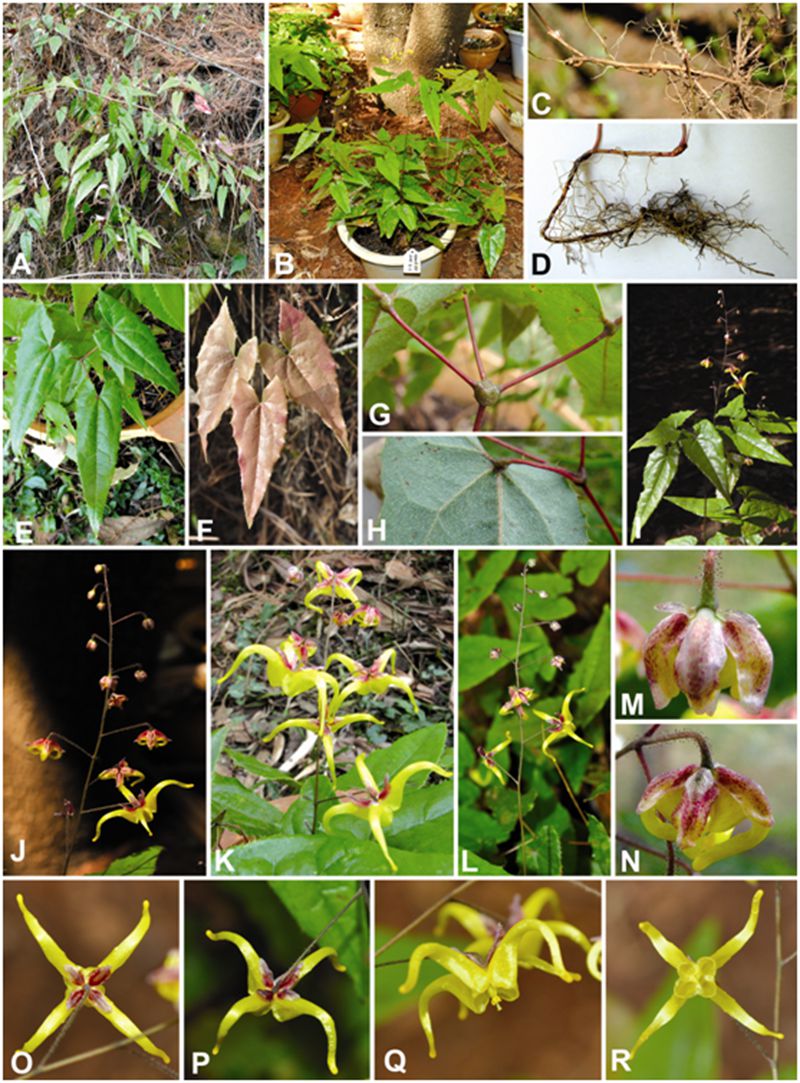Name:HU Guangwan
Tell:
Email:guangwanhu@wbgcas.cn
Organization: Wuhan Botanical Garden
One More New Species of Epimedium Discovered in Yunnan
2017-02-27
“Yin-Yang-Huo” , a traditional Chinese medicine, comes from the overground part of some species of the Genus Epipedium in Berberidaceae family. Some Epimedium plants are reported with aphrodisiac properties and effects on dispelling wind and eliminating dampness. They have been verified with anti-aging, anti-tumor and anti-HIV activity, attracting relatively extensive attention from researchers. In addition, their special characters in leaves and flowers enable them to be valuable ornamental shade plants.
Prof. HU Guangwan, the current curator of the Herbarium of Wuhan Botanical Garden, CAS (HIB), initially discovered an unusual kind of Epimedium in Zhaotong City, Northeastern Yunnan, in 2009. After cultivated at Kunming Botanical Garden, it grew well and blossomed for a few successional years without beening given a right scientific name.
To solve this problem, Prof. HU conducted another two field investigations at locality where this plant was initially discovered and around area, collecting enough specimens and research materials. Coincidently, Dr. ZHANG Yanjun of another research group of Wuhan Botanical Garden also found this special Epimedium at the same county of Zhaotong City during a filed investigation in 2009. Since it is without flowers, she couldn’t identify it at that time, but this peculiar Epimedium has already attracted her attention.
Under the supervision of Dr. HU Guangwan and Dr. ZHANG Yanjun, WEI Neng, a master student of Grade 2015, conducted a series of taxonomic activities. Through literature review, detailed comparisons with representative collections and microstructure observations, the species was confirmed to be new to science.
This new species is most similar to E. membranaceum, but differs to it in having ovate-deltoid to lanceolate leaflets with appressed stout hairs on the abaxial surface, simple raceme, smaller flowers (2–3 cm in diam.), ovate inner sepals and its length ratio of inner sepals to petals (1/3 to 1/4). The description of this new species was published in Phytotaxa entitled “Epimedium zhaotongense(Berberidaceae), a new species from Yunnan Province, China”. Its type specimens are stored at HIB.
This species was only found at Zhaotong City, Yunnan Province, China, and thus named as Epimedium zhaotongense. After several field investigations, it occurs at only two sites (ca. 12 km away from each other) with very limited individuals. According to criterion of the International Union for the Conservation of Nature (IUCN) red list, it is regarded as Critically Endangered. Therefore, protection measures need to be taken concerning such as ex situ conservation and in situ conservation to protect this rare Epimedium.
Previously, Dr. ZHANG Yanjun has published 3 new Epimedium species during her long time taxonomical work on this genus; they were E. shennongjiaense, E. jinchengshanense and E. xichangense. E. zhaotongense is the fourth new member of Epimedium that has been found and named by researchers from Wuhan Botanical Garden.

Epimedium zhaotongense. —A. The habitat in the wild. —B. Cultivating in the garden. —C, D. The long creeping rhizome. —E, F. The leaf with 3 leaflets. —G. Node of the 3 leaflets. —H. Abaxial leaflet surface with thickly short apprised hairs. —I–L. Inflorescence. —M, N. Petals, side view. —O. Flower, top view. —P, Q. Flower, side view. —R. Flower, underneath view. (Photo by HU Guangwan)